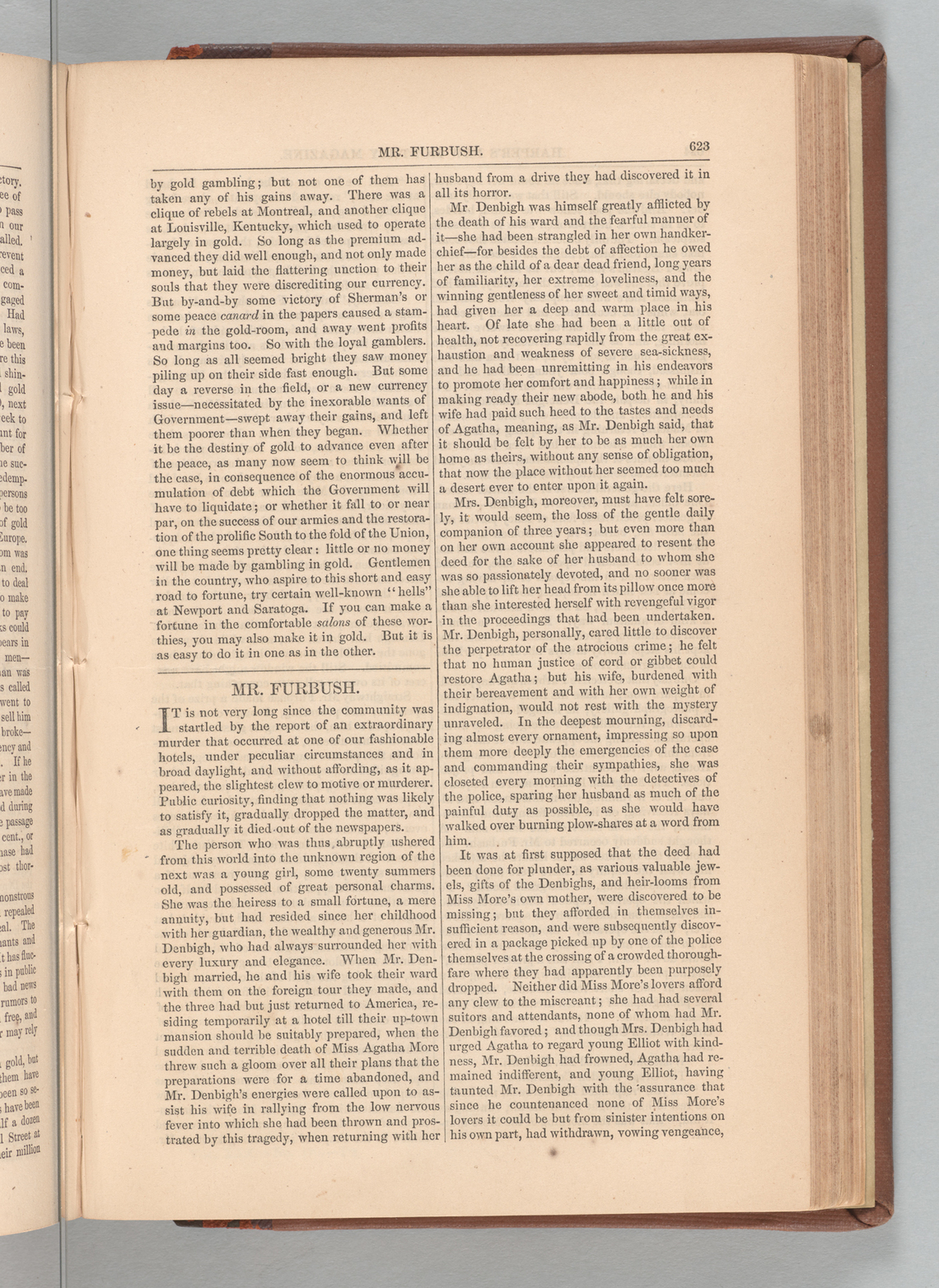"Mr. Furbush"
-
The protagonist of the anonymous short story “Mr. Furbush” is “Detective Furbush—a man of genteel proclivities, fond of fancy parties and the haut ton.” Such a character formation will become increasingly familiar to followers of detective fiction, reaching its apex, perhaps, in Dorothy Sayers’s Lord Peter Wimsey.
“Mr. Furbush” reminds us that the detective story as a genre was growing up alongside of various technologies that would become integral to modern forensic science. Our investigator solves a murder case by doing successive enlargements of a photograph of the murder scene that was, coincidentally, taken while the murder was happening.
This story, judged as a work of fiction, is not especially noteworthy. One is surprised to find, therefore, that it is immediately followed, in issue 179 of Harper’s, by a new installment of Wilkie Collins’s Armadale (1864-66). Armadale, a novel of psychological suspense, was among Collins’s major works; and Collins remains an acknowledged master of mystery writing. Such is the highly variegated tapestry of fictions to be found in periodicals such as Harper’s.
Introduction
- Label
- "Mr. Furbush"
- Author
- Harriet Elizabeth Prescott Spofford
- Original Publication Date
- 1865
- New Publication Date
- 1865
- Publisher
- Harper's New Monthly Magazine
- Location
- Butler Stacks
- Case
- 4
